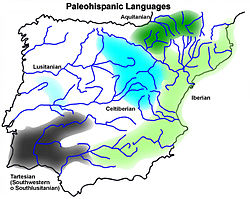Again, haplogroup J2a4b*-M67(xM92) comprised 51-79% of the Y
chromosomes in the Ingush and three Chechen populations (North-East Caucasus, Nakh
linguistic group), while, in the rest of the Caucasus, its frequency was not higher than 9%
(average 3%). Finally, haplogroup J1*-M267(xP58) comprised 44-99% of the Avar, Dargins,
Kaitak, Kubachi, and Lezghins (South-East Caucasus, Dagestan linguistic group) but was less
than 25% in Nakh populations and less than 5% in the rest of Caucasus.
.....
Therefore, linguistics explained a larger part of Y-chromosomal variation in the Caucasus.
These analyses indicated that linguistic diversity is at least as important as geography in
shaping the Y-chromosomal landscape, and suggested that the pronounced genetic structure of
the Caucasus might have evolved in parallel with the diversification of the North Caucasus
languages.
.....
http://mbe.oxfordjournals.org/content/early/2011/05/13/molbev.msr126.full.pdf+html
also
Chechens are connected with the Middle East on the Y-DNA side, but closer to Europe in terms of mitochondrial DNA.
[I. Nasidze, E. Y. S. Ling, D. Quinque et al., "Mitochondrial DNA and Y-Chromosome Variation in the Caucasus," Annals of Human Genetics (2004) 68,205–221.]
Clearly linguistics in North Caucasus correlates with Y DNA markers. It was the result of male founder effect. The womens are more Steppe related that is why they are shifted to North Europe.
The most probable reason that this J2 and J1 moved to high mountains of Caucasus is the invasion of another population. Most probably the R1b.
I think the greatest irony of this 'Hurrian' R1b story will be the finding that this R1b-Z2103 came from Balkans. This will nicely explain their Atlantic shift.







